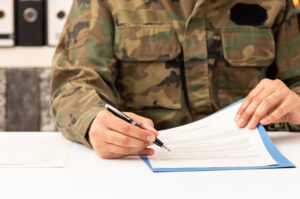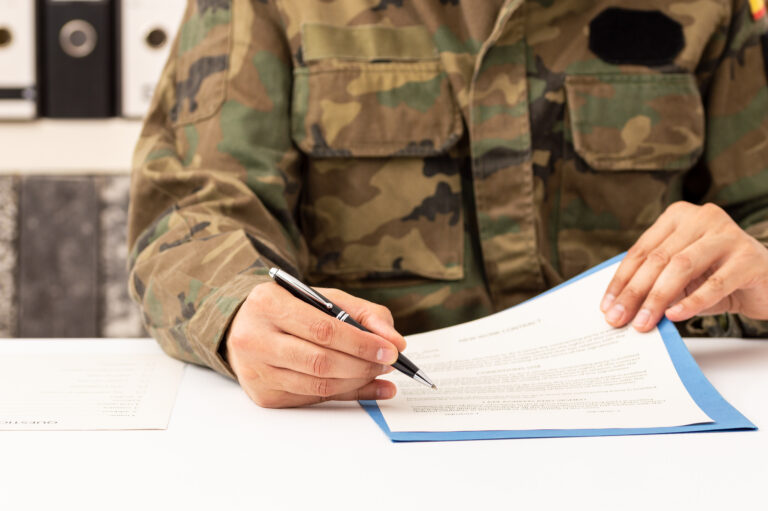DoD CAC for Reservists and Guardsmen
The Department of Defense (DoD) Common Access Card (CAC) is a vital tool for military personnel. It grants access to secure DoD networks and facilities. This article dives into the specifics of CAC for reservists and guardsmen.
What is a Common Access Card (CAC)?
The CAC is a smart card issued by the DoD. It serves as both an identification card and a security token. Embedded with a microchip, it stores data used to log into DoD computers, access buildings, and authenticate users. The CAC ensures that only those with the proper credentials can access sensitive information and secure locations.
Why Reservists and Guardsmen Need a CAC
Reservists and guardsmen perform critical roles within the military structure. They must access the same secure networks and facilities as active duty personnel. This access enables them to stay current with training, participate in missions, and communicate effectively within the military framework.
Access to Training Materials
A CAC allows reservists and guardsmen to access important training resources. Online modules, instructional videos, and manuals all reside within secure DoD networks. The CAC ensures that personnel can continually train and enhance their skills.
Communication with Active Duty Units
Seamless communication between reservists, guardsmen, and active duty units is crucial. The CAC enables secure email and collaboration tools, ensuring all personnel are on the same page. This is especially important for joint operations and mission planning.
Participation in Missions
Reservists and guardsmen are often called upon for missions both domestically and abroad. The CAC grants them the required access to mission-critical information and locations. This ensures they can effectively contribute to the mission’s success.
How to Obtain a CAC
Getting a CAC involves several steps. Here’s how reservists and guardsmen can secure their card:
- Confirm Eligibility: Ensure you are eligible to receive a CAC by verifying your status as a reservist or guardsman.
- Schedule an Appointment: CACs are issued at Real-Time Automated Personnel Identification System (RAPIDS) sites. Locate a RAPIDS site and schedule an appointment online.
- Gather Required Documentation: Bring two forms of acceptable identification, one of which must be a photo ID. Also, have your military orders or proof of affiliation.
- Attend Appointment: During your appointment, your photo and fingerprints will be taken. You will also be required to create a personal identification number (PIN).
Using Your CAC
Once you have your CAC, it’s important to know how to use it properly. Here are the main uses:
Logging into Secure DoD Networks
Insert your CAC into a card reader connected to your computer. Enter your unique PIN when prompted. This allows secure access to DoD networks and systems.
Accessing Buildings and Facilities
Your CAC is often used as a key card for accessing secure buildings and rooms. Swipe or insert your card where required to gain entry. This ensures only authorized personnel can enter sensitive areas.
Secure Communications
Use your CAC to access encrypted email and communication tools. This ensures that sensitive information is not compromised during transmission. Your CAC serves as a digital signature, verifying your identity electronically.
Security Considerations
Maintaining the security of your CAC is paramount. Here are key security practices:
Keep Your CAC Safe
Always keep your CAC in a secure place. Never leave it unattended or lend it to others. Treat it as you would any other form of identification or access key.
Protect Your PIN
Never share your PIN with anyone. Memorize it and do not write it down where others can find it. Choose a PIN that is difficult to guess and avoid common number combinations.
Report a Lost or Stolen CAC Immediately
If your CAC is lost or stolen, report it immediately to your chain of command and the RAPIDS office. Prompt reporting helps prevent unauthorized access using your credentials.
Renewing and Updating Your CAC
Your CAC has an expiration date and will need to be renewed periodically. Follow these steps to renew or update your card:
- Check Expiration: Keep track of your CAC’s expiration date. Most cards are valid for three years.
- Schedule Renewal Appointment: As your expiration date approaches, schedule a renewal appointment at a RAPIDS site.
- Update Personal Information: If you have changes to your personal information, such as rank or name, ensure these updates are reflected in your records before your renewal appointment.
Situations Requiring Immediate CAC Update
Certain changes in your status or personal information require an immediate update to your CAC. These include:
Promotion or Rank Change
If you receive a promotion or your rank changes, update your CAC to reflect your new status. Your card should always display your correct rank and position.
Name Changes
If you legally change your name, ensure your CAC and military records are updated promptly. This avoids discrepancies and ensures your identification is accurate.
Reassignment or Deployment
If you are reassigned to a different unit or deployed, an update to your CAC may be necessary. This ensures your access credentials align with your new assignment.
Technical Issues and Troubleshooting
Technical issues with your CAC are not uncommon. Here are common problems and solutions:
Card Reader Issues
If your card reader is not functioning, check the connections and ensure it is properly installed. Sometimes, updating drivers or software may solve the problem.
PIN Blocked or Forgotten
If you enter your PIN incorrectly multiple times, it may become blocked. Visit a RAPIDS office to unblock or reset your PIN. If you forget your PIN, a reset at the RAPIDS office will be necessary.
Certificate Errors
Certificate errors can prevent access to systems. Ensure your certificates are up to date. Sometimes, clearing the cache on your computer or updating your security settings can resolve these issues.
Benefits Beyond Security
Aside from security, the CAC offers other benefits to reservists and guardsmen:
Library Access
Many military libraries require a CAC for entry and borrowing materials. This includes both physical libraries on bases and digital libraries offering e-books and resources.
Discounts and Perks
The CAC may provide access to military discounts and perks. Many retailers and service providers offer discounts to military personnel, validating eligibility through the CAC.
Health and Dental Services
Access to Military Treatment Facilities (MTFs) often requires a CAC. This ensures you can receive medical and dental care from military providers when needed.
Balancing Civilian and Military Roles
Reservists and guardsmen juggle civilian and military commitments. The CAC plays a role in helping manage this balance:
Military Duty Access
When fulfilling military duties, the CAC provides access to necessary resources and facilities. This ensures reservists and guardsmen can perform their military roles without disruption.
Civilian Employment Verification
Employers can verify military status through the CAC. This can be important for benefits and legal protections related to military service.
Managing Dual Roles
Having a CAC simplifies navigating between civilian and military responsibilities. It provides the tools and access needed to effectively manage both aspects of life.
Future of CAC Technology
The DoD continually enhances CAC technology to meet evolving security needs. Future improvements may include advanced biometric authentication, enhanced encryption, and integration with other security systems.
The role of CACs will likely expand as digital security becomes increasingly important. Staying informed about these changes ensures reservists and guardsmen can leverage new features and maintain security standards.
In summary, the DoD CAC is essential for reservists and guardsmen. It provides secure access to networks, buildings, and communication tools, while also offering additional benefits. Proper use and maintenance of the CAC ensure that personnel can perform their duties effectively and securely.
“`






